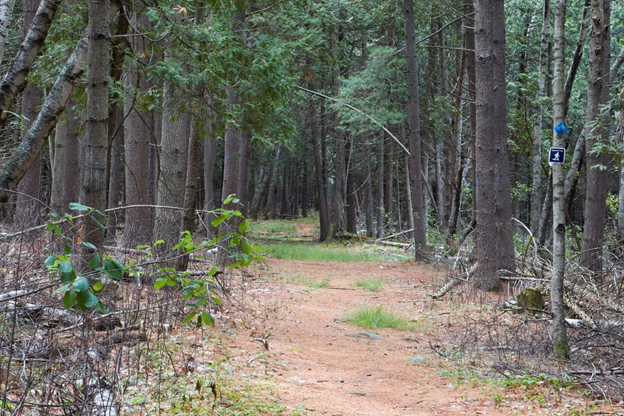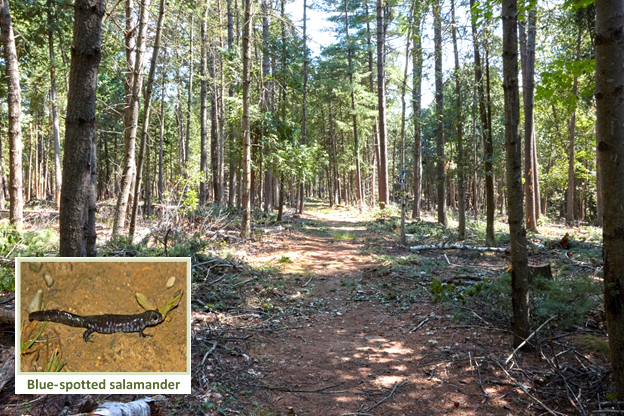DACF Home → Bureaus & Programs → Maine Forest Service → Projects → What will my woods look like? → Harvesting Near a Recreational Trail: Natural small sawtimber pine stand
Harvesting Near a Recreational Trail
Site: Natural small sawtimber pine stand
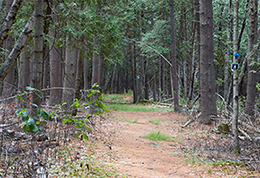
Woodland Owners’ View
There are too many trees in this place. It’s dark. If a few trees—maybe about half—come out, the tops of the rest of the trees will be able to get sun and grow faster and it will be brighter for hiking and biking.
Logger’s View
With careful planning, equipment trails can be located away from the recreation trail, with a minimum of intersection. Using mechanical harvesting equipment, controlled felling will keep tops and limbs off the recreation trail too. There will probably be some clean-up work to do by hand, though, especially where the trails cross. This could factor into the stumpage price.
Forester’s View
Overstocked, near 100% crown closure in this stand. Growth on valuable timber trees is slowing; crowns need to be released on two or three sides. Recommend a low thinning and crown release, removing 40-50% of the basal area.
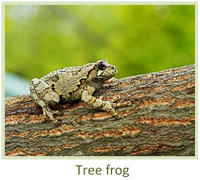
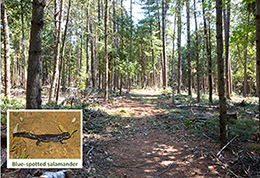
Woodland Owners’ View
More sun in there, and it’s nice to see more through the woods! There’s nothing in the way on the bike trail, and the forest is still standing! The loggers did a great job cleaning up where needed; the amount they paid for the wood was very fair, all things considered.
Forester’s View
The stocking is now nearly optimum for good growth and vigor in the residual stand. Should check conditions for another thinning and spacing, when the crowns close back in again, probably in ten years.
Wildlife Outcome
The relatively small amount of wood down on the ground will still provide some habitat for beneficial insects, small mammals, salamanders, and ground-nesting birds. The relatively dense evergreen canopy cover will keep snow depth down in the winter, which helps deer and other wildlife.
Equipment Used
In-woods cut-to-length processor, and four-wheeled forwarders.
Location:
University Forests, Old Town
Keith Kanoti, Charlie Koch, and Robin Avery, Managers
207-944-6841; keith.kanoti@maine.edu
